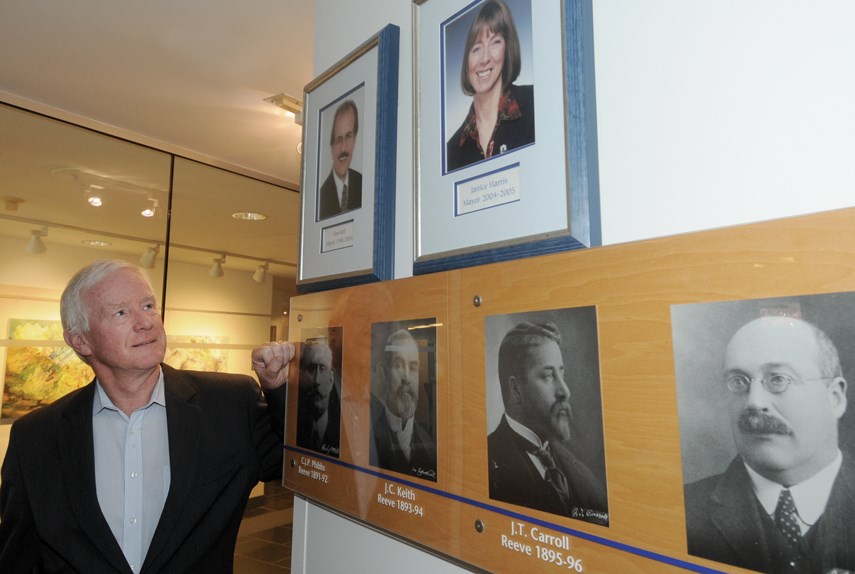This is Part 2 of a look back at the history of the North Shore’s mayors. Part 1 can be found here.
Spain did not reject the North Shore. We just weren’t right for each other.
One year before Captain George Vancouver drifted past Stanley Park, Spanish explorer Jose Maria Narvaez and his crew were the first European settlers to cast their eyes on the North Shore’s towering mountains and expansive forests.
With a twist of history, we might all be honking at each other on Trabajadores de Hierro second narrows crossing today. But whatever Narvaez saw in 1791, he didn’t see a reason to stop.
George Vancouver, however, entered the narrows on June 12, 1792, where he found natural beauty and almost unnatural hospitality.
In welcoming Vancouver’s crew, the Squamish threw clouds of feathers, “which rose, wafted in the air aimlessly about, then fell like flurries of snow to the water’s surface, and rested there like white rose petals scattered before a bride,” according to Squamish leader Andrew Paull’s account in Daniel Francis’ book Where Mountains Meet the Sea.
But while Vancouver saw the North Shore and the North Shore’s people, his records show no sign of the Capilano River.
“Perhaps he did not notice it,” posits historian James Morton in his book Capilano: The Story of a River.
In the days when West Vancouver had value and property but no property values to speak of, the beautiful swath of land was known only as West Capilano.
Around the turn of the century, “white men have so increased that they are like a storm of locusts,” Chief Joe Capilano vented in 1906. “They have extinguished the buffalo, and the moose is each year getting less and less. The cariboo is doomed, and our rivers no longer give forth that abundance of fish that was the heritage of our forefathers.”
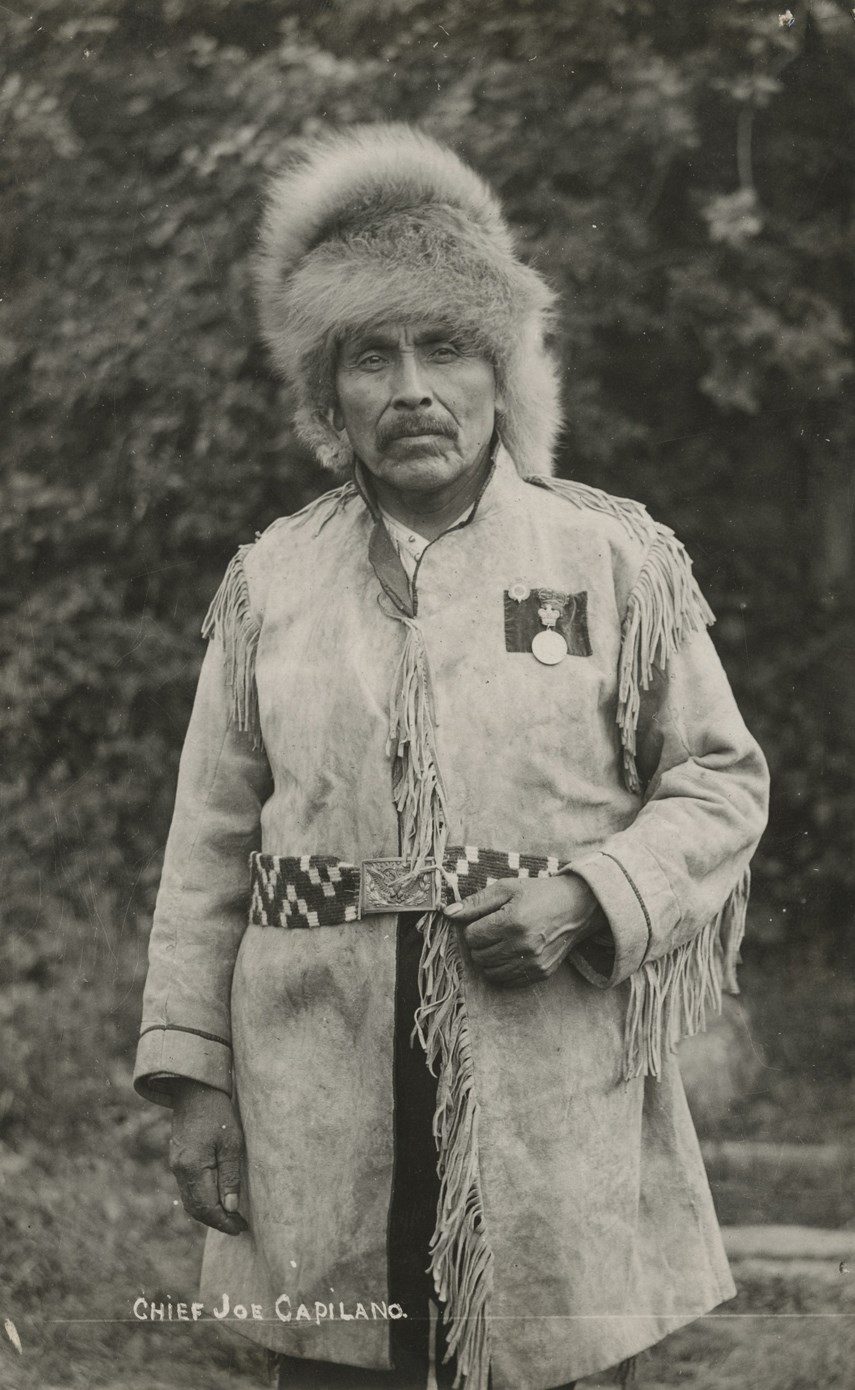
But as Canada marched toward confederation and Moodyville shipped North Shore timber all over the world, West Capilano remained largely untouched.
“Moodyville was only some two miles from the Capilano, but it might as well have been a hundred . . . primeval forests separated the two,” Morton writes. “Other than the Indian village of Homulcheson, there was no habitation to the west.”
There was a time, according to Squamish elder Simon Baker, when opportunistic Haida and Kwakiutl would wait until Squamish fishermen ventured away from their home. That’s when raiding clans would descend on the land to grab slaves.
“Someone had the idea (the women and children) should dress up like men and walk around the beach. When the Haidas and Kwakiutl saw them, they thought the men were still home and they turned back. That’s how it got called Homulchesun, the place where the women, children and elders won without fighting,” Baker explains in Francis Mansbridge’s book Cottages to Community.
Among settlers, Capilano entered the lexicon in 1859 when the captain of the HMS Plumper reported that the chief of the Squamish tribe was named Ki-ap-a-la-no.
Of course there was a man named Ki-ap-a-la-no. There was also a legend not easily disentangled from the man.
He may have been a tower of charisma who married women from the Musqueam, Tla’amin, and Squamish nations.
One account has him watching Simon Fraser land. Another has him meeting with Captain Vancouver.
Morton suggests Ki-ap-a-la-no may have been a masterful battle strategist who used a decoy to decimate slave-trading raiders in a battle that sounds like the Quentin Tarantino version of the encounter described by Baker.
But while most accounts of Ki-ap-a-la-no are varying versions of hearsay and near-say, Morton includes a childhood memory of Mrs. James Walker, who met the white-haired man a few years before his death.
“He was a great big man with a voice like a microphone on a loudspeaker,” she recalls. “And he always had a smile.”
There would continue to be skirmishes around Ki-ap-a-la-no’s river in the 20th century, although they were mostly confined to the court room.
The first reservoir dog
John Thomas Carroll, the District of North Vancouver’s third mayor was, as a judge would later put it, “not lacking in boldness.”
His political career blossomed on Vancouver’s 1890 council under mayor David Oppenheimer but he soon found himself attacked for appealing the assessed value of his property in Vancouver’s east end.
“It is remarkable that the Doctor should appeal, considering the fact that he was a member of the Finance Committee last year, and was thereby largely instrumental in raising the values of properties,” wrote an outraged Vancouver Daily World reporter in a record compiled by historian Dick Lazenby.
Carroll resigned his position in 1892, prompting yet another blistering attack in the Vancouver Daily World, who referred to him as a shirking, backbone-lacking, laughing stock who quit for fear he “may injure his chance of grasping greater power.”
The editorial concluded Carroll was “not worthy to be the Mayor of a great and growing city like Vancouver.”
Carroll was elected District of North Vancouver mayor in 1895 but he really came to prominence in 1902 when he bought 59 acres including the land around the Capilano dam. A 1902 World newspaper article describes the reaction to his ownership succinctly: “This piece of intelligence elicited a series of ejaculations from the board. The chairman said, “Oh.” Alderman McGuigan said, “Ah,” and the city solicitor said, “Um.”
That August, Carroll got on his horse and headed for the Capilano dam “with staples, hammer, nails and padlocks,” and the intention to “close everything up.”
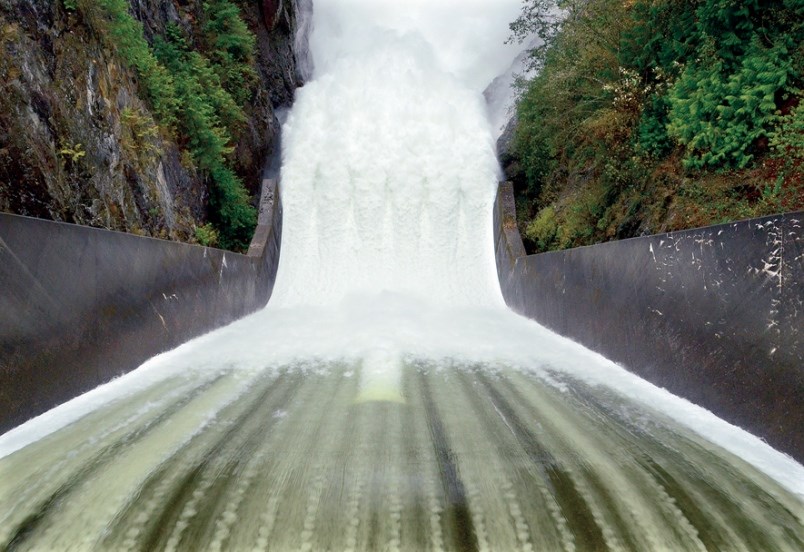
Essentially, Carroll asked for compensation based on his ownership of the property. The problem, however, was that Vancouver already had their waterworks on the property.
Carroll escalated the water fight with Vancouver, at one point threatening to drain the city’s reservoir.
Described by Morton as a “maverick physician,” Carroll also promised to chop the portion of the Capilano Dam that intruded on his property.
“He was referred to as ‘the civic enemy,’ but in a good-natured sense,” Morton writes.
During what one reporter called, “the merciless hail of interrogations,” Carrol demanded the city pay $10,000 for his land, arguing that in a few years, “the city couldn’t get it for twice that.”
“We want no more proposals with strings to them,” Carroll said.
“It was your offer,” the city solicitor shot back.
“But your string,” Carroll replied.
Ultimately, the court decided the city would pay Carroll about 10 cents on the demanded dollar, or $1,012.50.
“For the first time in the history of the litigation between the doctor and the city, the latter had won the day,” Morton writes.
Perpetually undeterred, Carroll immediately started looking into the possibility of building a hotel in the area.
A classy way to lose it
While captains of industry were reluctant to plant their flag amid the treacherous terrain west of the Capilano River, the area seemed to exert a magnetic pull on “dreamers and eccentrics,” Mansbridge writes.
With a population that ranged from 150 to 200 depending on the weather, West Vancouver was birthed by discontent.
“Many living west of the Capilano felt they were not getting their share of the tax dollar,” Mansbridge writes. Luckily, those misgivings would only recur a few more times in the municipality’s history.
West Vancouver’s first mayoralty election was significant not so much for the victory of “cricketer and pioneer druggist” Charles Nelson but for the way John Lawson handled the loss.
After being edged by 15 votes in the 1912 contest, Lawson donated the land for a permanent and proper municipal hall.
But while that hall was being built, mayor Nelson authorized the purchase of ferries and took a firm stand to stop, “the dangerous practice of indiscriminate shooting on Capilano Road,” at council meetings held in a tent pitched north of Marine Drive.
But while West Vancouver was home to landscapes and gardens, it was also rife with garden variety racists, as one of council’s first acts was to stipulate: “no Asiatic races be employed on any municipal work,” Mansbridge writes. British Pacific Properties also banned everyone of African and Asian descent from their homes, unless they were servants.
Elected on his second attempt, (by a whopping 36 votes) Lawson connected West Vancouver with the North Shore and West Vancouverites with each other.
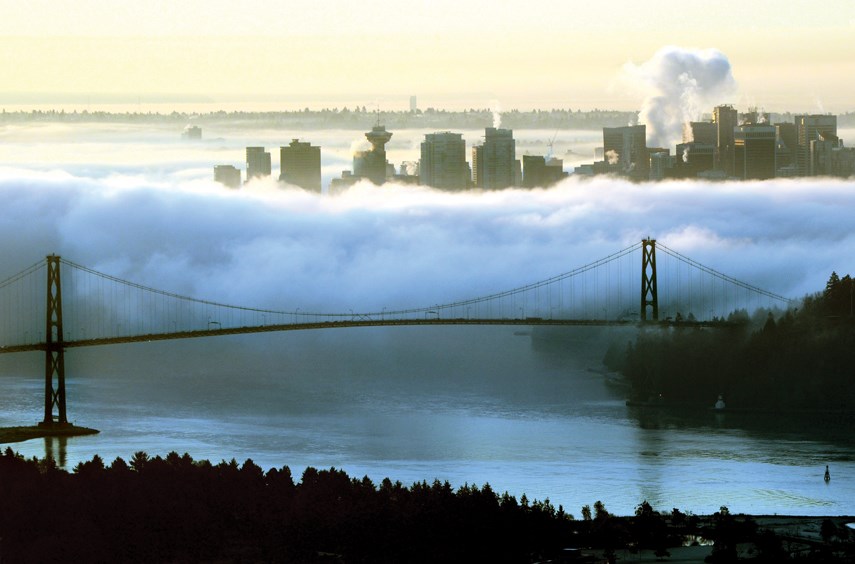
Besides initiating the paving of Marine Drive from Ambleside to Dundarave, Lawson brought phone service to West Vancouver and held church services at his house. Lawson also trekked across the Keith Road bridge in a horse buggy once a week to grab his constituent’s mail from North Vancouver before schlepping it back over the bridge.
Ambleside took its name from a town in England’s Lake District. Dundarave had been called Newcastle until a few astute observers realized the neighbourhood had a distinct lack of coal.
The holly in Hollyburn came from the two holly trees in front of Lawson’s home. Burn is a Scottish Gaelic word referring to a place by the water, Mansbridge notes.
But perhaps Lawson’s most revealing decision came in 1916 when he decided to lie about his age.
With war breaking out in Europe, Lawson, 56, convinced the 158th Overseas Battalion, that he was still in his 40s and served in France.
“Here was a man who had seen the first trains of the Canadian Pacific Railway pass . . . who had carved out of the virgin forest his garden on the shore,” praised Vancouver archivist James Skit Matthews.
Asked about his service by Matthews, Lawson only smiled and said: “I went there to become a millionaire.”
But while Lawson returned to service as president of the West Vancouver branch of the Canadian Legion, his son Duncan was shot and killed by a machine gun bullet at Cambrai about one month before the armistice.
Enter George Washington (sort of)
One of the greatest headlines in the history of local media is this gem from 1926: Watch West Van Grow. What makes it great is that the article is entirely about the cultivation of large sweet peas.
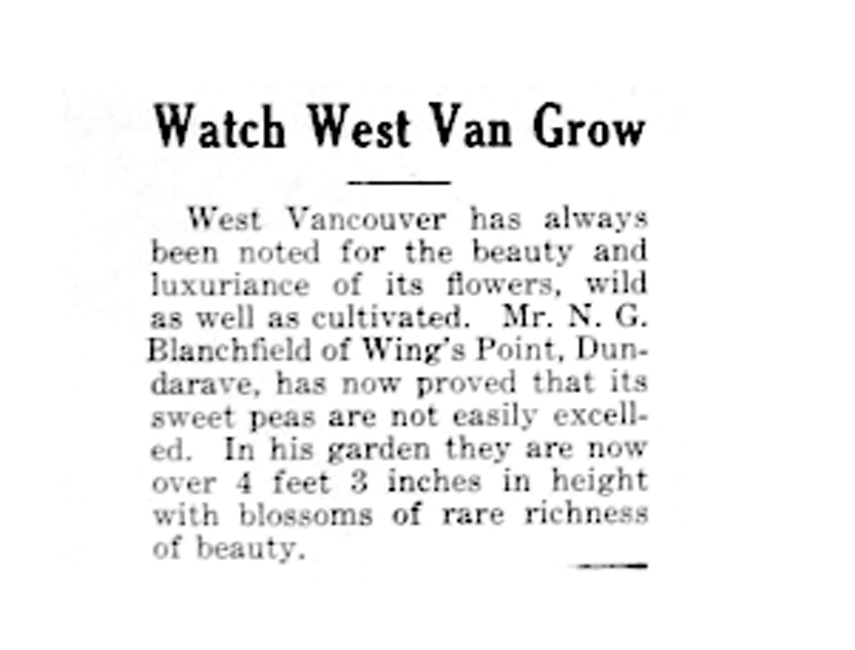
That same year, the newspaper chronicled the shortage of apartments in West Vancouver and took a principled stand with a blistering editorial, entitled Removing a Menace, which called for the chopping down of view-obstructing trees. (Publishers H. Hodgson and Captain F.F. Lovegrove would walk that one back a little bit.)
But the entire complexion of the North Shore changed in 1930 when the Pacific Gatherer barge wedged and wrecked the original Second Narrows bridge.
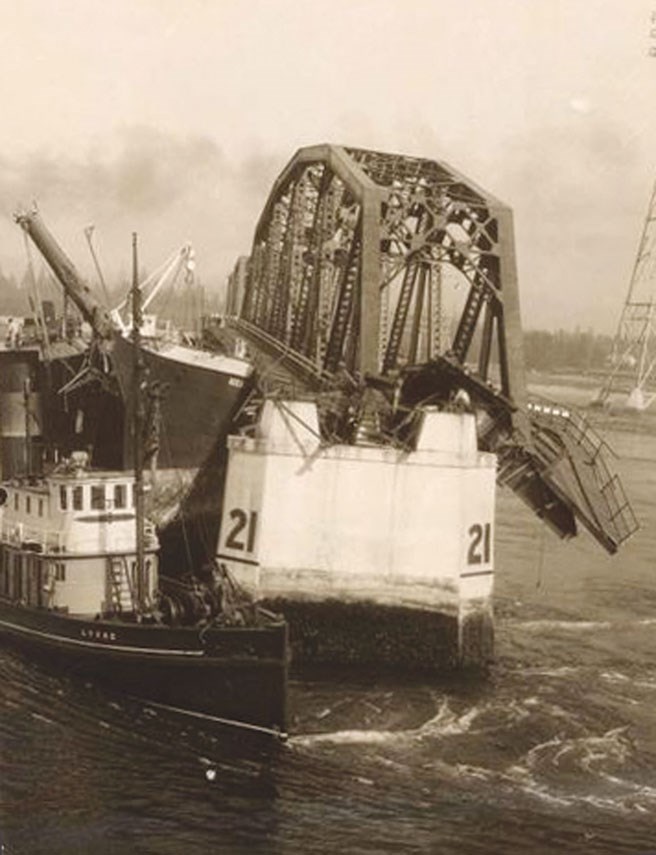
Repairing it would cost an estimated $200,000, which wouldn’t have been a problem except for one thing: “Money had taken a long vacation,” Lynn Valley pioneer Walter Draycott noted.
Just a few years earlier real estate agents had been peddling 100x132-foot “almost cleared lots” for $350. The ads carried the tagline: “The Bridge Is Coming Sure.”
But with the bridge out of commission those sales dried up. Draycott recalled supporting himself by pulling clams from the mudflats at Moodyville, gathering hazelnuts along the Seymour River and fishing for trout in Lynn Creek.
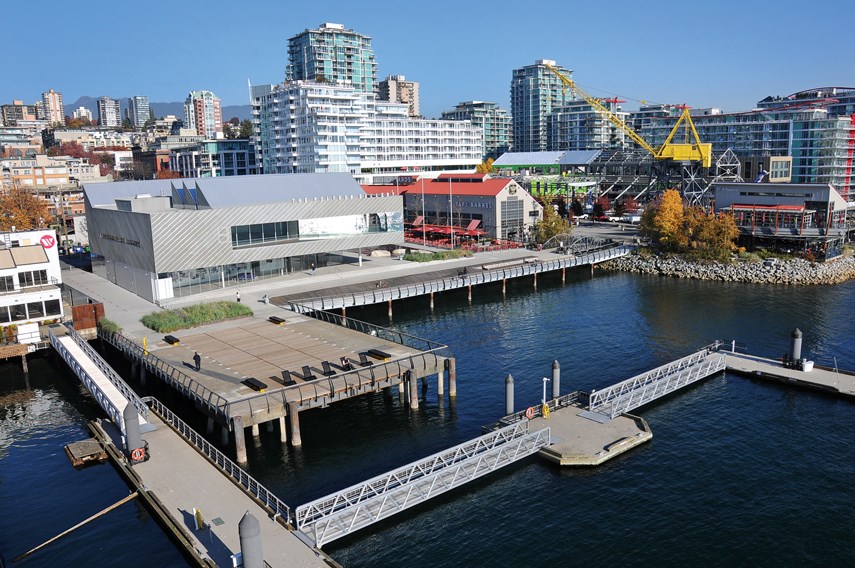
With the two North Vancouvers in receivership, George Washington Vance took over as the province-appointed commissioner through the Depression and much of the Second World War.
Vance, who had previously been hawking those almost cleared lots from his Lonsdale Avenue real estate office, was suddenly charged with defending the city from filth and chaos.
In 1937, Vance established a poundkeeper to regulate, restrain, and prohibit, “cattle from running at large in public places,” according to an old city bylaw.
In this sense, “cattle” also referred to cats, fowl, poultry and rabbits, all of which would be fed and milked (as appropriate) by the poundkeeper until the owners turned up to pay $6 for bulls and stallions, $2 for boars, rams, horses, donkeys, mules, cow and oxen, 50 cents for sheep, goats and swine, and 25 cents each for all poultry.
Vance continued to guide the community until the wartime shipbuilding boom made the 25-cent poultry trade look like chicken feed.
Cuffed
When Joseph Bentley Leyland stepped away from West Vancouver politics in 1940 after a decade in the mayor’s chair, his colleagues and friends staged a bizarre ritual.
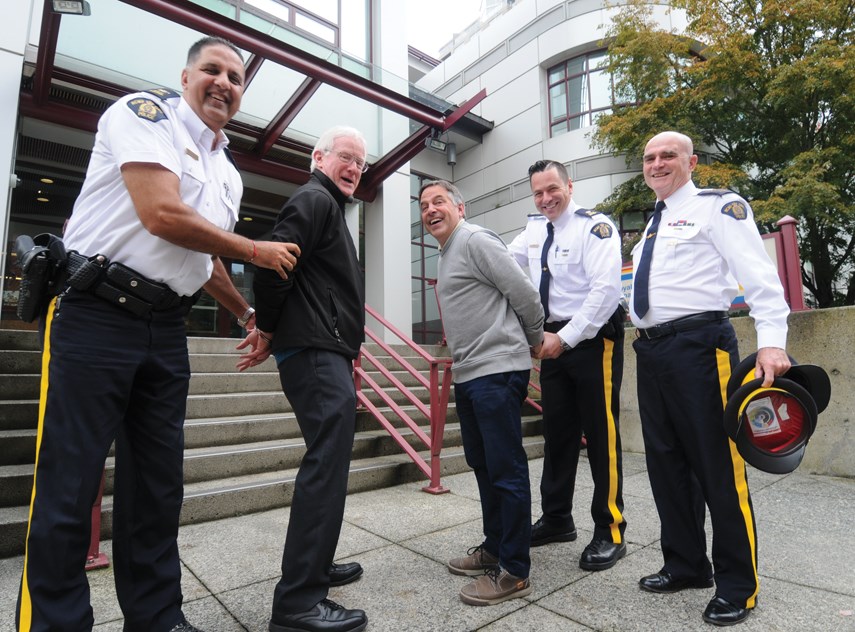
Leyland, who once ran on the platform: “Finance – Pay as you go,” was arrested, according to a newspaper account. A West Vancouver police officer told Leyland he was guilty of being ethical, and of guiding West Vancouver from, “a summer camp to a high class residential suburb.”
The tradition continued this week with outgoing North Van mayors Darrell Mussatto and Richard Walton.
The two have run into each other about twice a week for 13 years, according to Walton.
Aside from the mayor’s relationship with the chief administrative officer and the municipal council, there’s no relationship as important as the one with the other North Vancouver mayor, Walton says.
That doesn’t mean it’ll result in amalgamation, he notes, but in terms of police and fire, “it’s a seamless community.”
Preparing to leave office after 13 years at the helm, Walton reflects on his status as an immigrant from, “a brick row townhouse in Manchester,” who ended up doing one of the most challenging political jobs in B.C.
“North Van district is probably the most difficult community in the province, I think, to be mayor of, because we have no town centre.”
The district also has the usual concerns of a growing municipality, but every choice is complicated by the municipality’s next-door-neighbour relationship with the vast expanse of forest that compelled Narvaez to keep going and Vancouver to stop.
It’s a place Francis Caulfeild described as, “the pearly light on the sea, and the great snow-clad volcano in the distance flushing rosy as the sun gets low.”
Preserving what people love about the North Shore will always spur passionate arguments, Walton says.
“They’ll always be that way. They’ll always have passion at political meetings and public hearings,” he says. “Sign of a healthy community.”
This article could not have been written without the work of Daniel Francis, Francis Mansbridge, James Morton, Dick Lazenby, West Vancouver archivist Reto Tschan, and the very patient and eternally helpful staff at the North Vancouver Museum & Archives.
